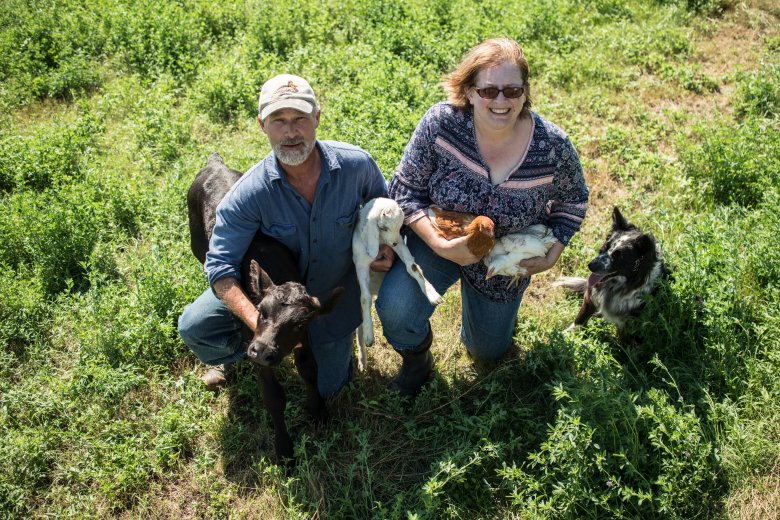THE CHICKENS ARE ROTATED THROUGH THE PASTURES AND HAYFIELD, WITH THE NITROGEN FROM THEIR MANURE ADDING NATURAL FERTILIZER.
George England slowly lets out the clutch on his sputtering old tractor. As it creeps forward, he twists in the seat, looking behind to watch his converted trailer slowly slide onto a fresh patch of pasture. A well-worn patch of grass starts to appear where the big portable cage just sat.
England is relocating his chickens. The wire mobile cages serve as portable homes to a flock of young white broilers. As the contraption begins to move, the poults get excited.
“When we move chickens in the morning, it’s fun to watch how they walk forward with the cage as it moves onto fresh grass,” George says. “The birds scramble to be first in line as new grass and a few grasshoppers and bugs appear under their feet. Their beaks get busy right away, chasing hoppers, pulling up on the fresh grass.”
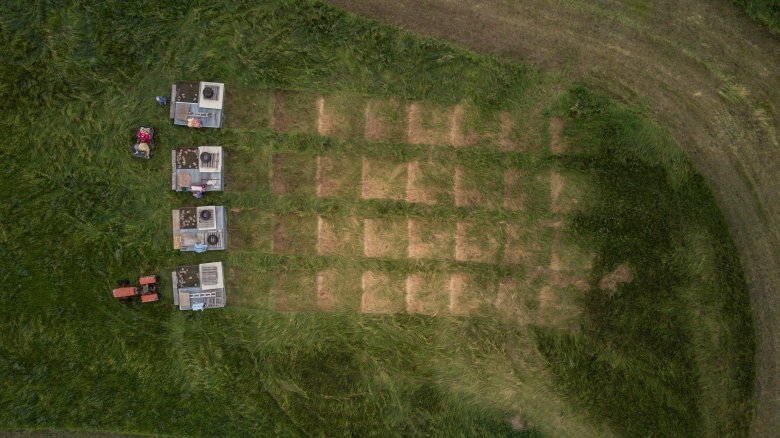
As the chickens get older, England can raise the height of the watering devices inside the cages so they can drink easily.
George and Suzanne England ranch in Mellette County, in central South Dakota. In addition to raising broiler chickens, they have egg-laying chickens, two breeds of goats, and a herd of Angus cattle. All are raised organically, with different requirements and needs. Spring is a busy time with cows calving, goats kidding, and daily chicken chores. The Englands are multitaskers.
The England ranch is located in an area of South Dakota known for its arid conditions and thin topsoil. Their grazing techniques have improved plant diversity because the various ruminants require different plants for their diets. As a result, the multispecies of animals help balance weeds and other plant species in their pastures.
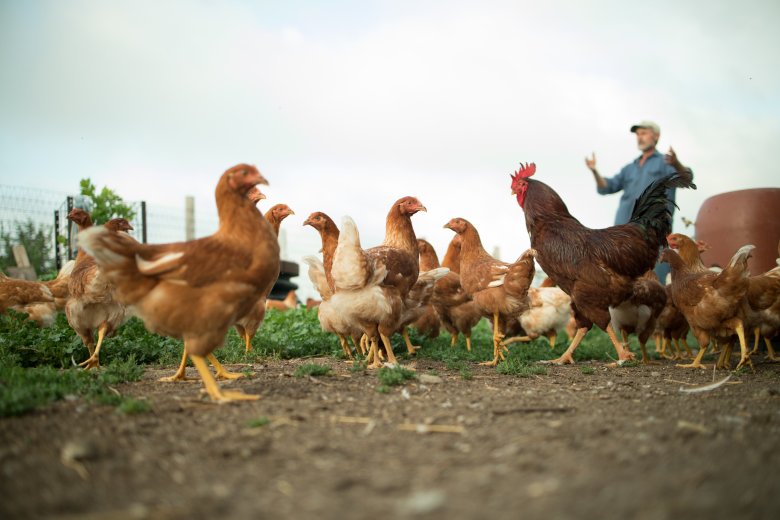
The natural fertilizer left by the pasture poultry has already increased forage production in those grazed areas in just one year.
“Where the chicken pens were, you can see a change in the amount of new growth, green growth, the very next year,” Suzanne says.
The goats include registered Savanna meat goats and Nubian dairy goats for soap and cheese. They also have a commercial herd of organic Black Angus cattle.
“Instead of thinking bigger and having a high debt load, we think smarter,” says Suzanne. “We became diversified and more sustainable.” She grew up on a farm in south-central Indiana and raised chickens. Goats were new to both of them. “We greatly enjoy our goats,” she says.
The chickens are rotated through the pastures and hayfield, with the nitrogen from their manure adding natural fertilizer.
During the first week of May, during calving and kidding season, the Englands have 330 broilers and 60 layer pullets to get to market. That is the month when the rangeland is at its peak with nutrients, says Suzanne.
Organic treatments for all the livestock include chrysanthemum flowers for fly control and free-choice organic apple cider vinegar to help with foot rot, general overall digestion, and acidity. It also cuts down on coccidiosis, a parasitic protozoa infectious disease in cattle, goats, and chickens, says Suzanne.
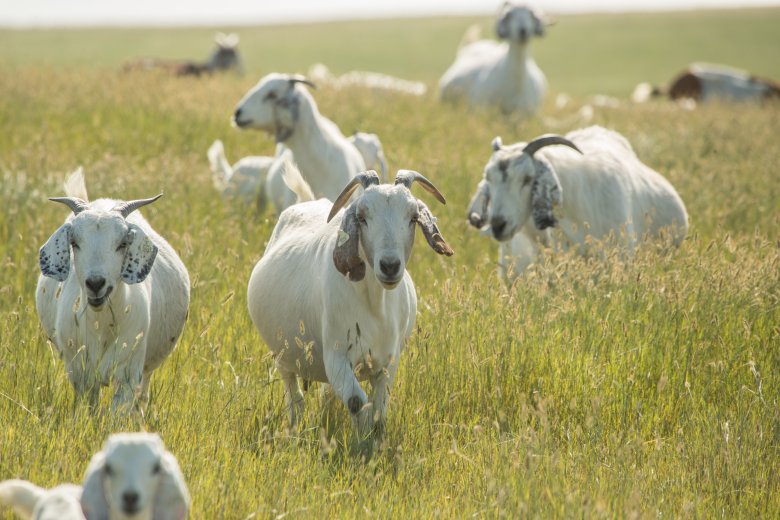
The Savanna goats, an indigenous meat breed introduced from South Africa, are parasite-resistant, so they do well in South Dakota winters and have great mothering instincts, she says.
The Englands butcher their chickens twice a year, 330 birds in a batch, with the help of around 30 neighbors. It takes about four hours.
“We’re in a very good community where all the neighbors help each other,” says Suzanne. Repeat customers buy their poultry. “They say our chickens remind them of eating at their grandma’s house for Sunday dinner,” says Suzanne. “That makes us proud because we’re feeding our community.”
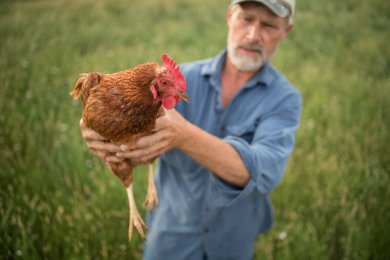
Their chickens aren’t the only ones around. “There are a lot of prairie chickens moving into this country these days,” says George, looking out over the waving grasses. “The prairie chicken is not so common for this area. The other day I noticed 50 or 60 little prairie chickens and a hen when I was out in the hayfield. That was cool. The prairie chickens are done nesting and their chicks are flying now. Prairie chickens are a sign of a healthy rangeland.”
If you take care of your livestock, it takes care of you, says Suzanne. “If you take care of your soil, that takes care of your livestock. I feel passionately about that. Our land and our livestock take care of us.”
